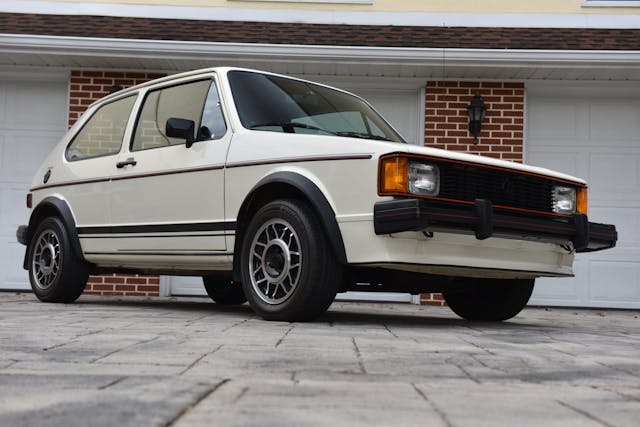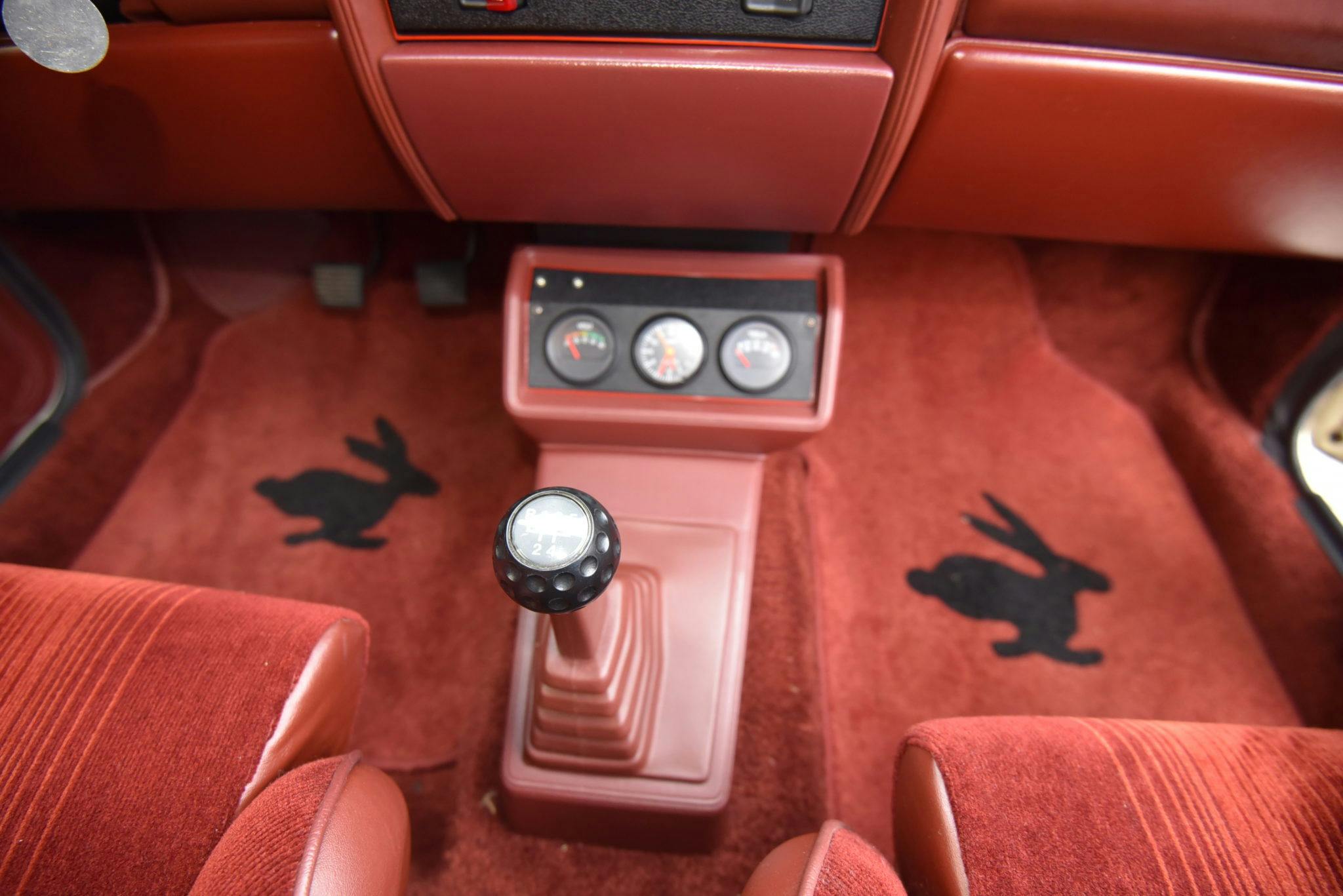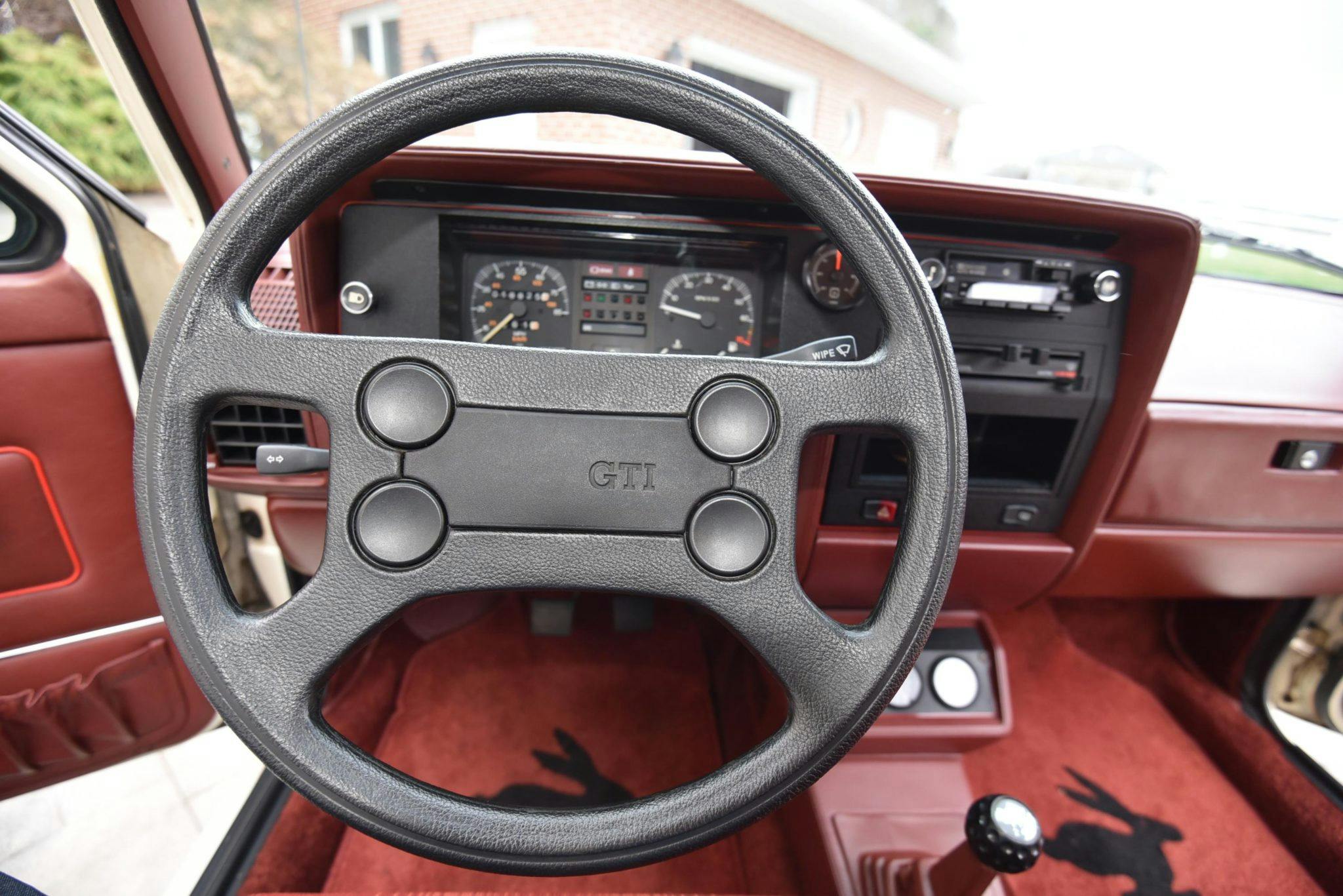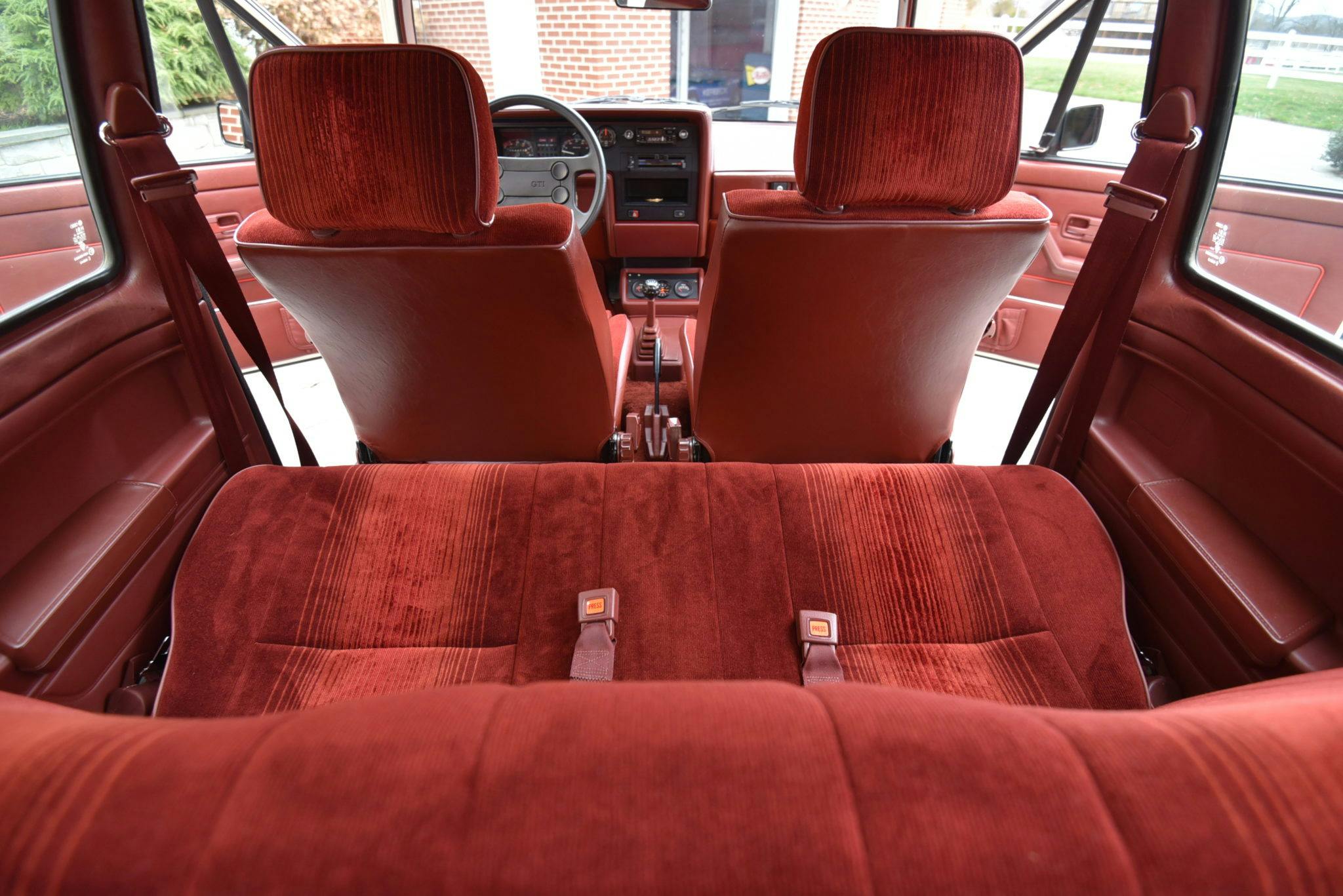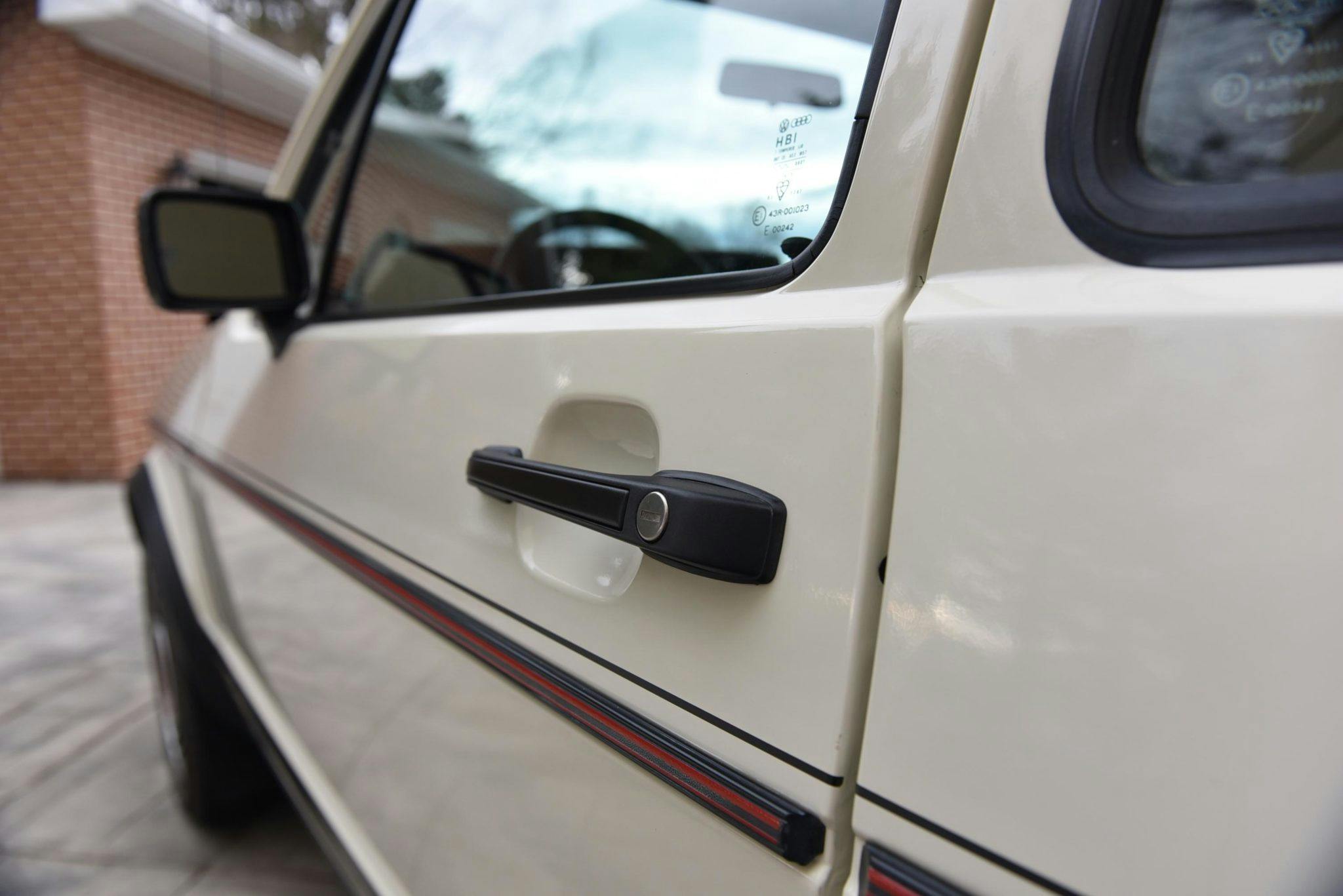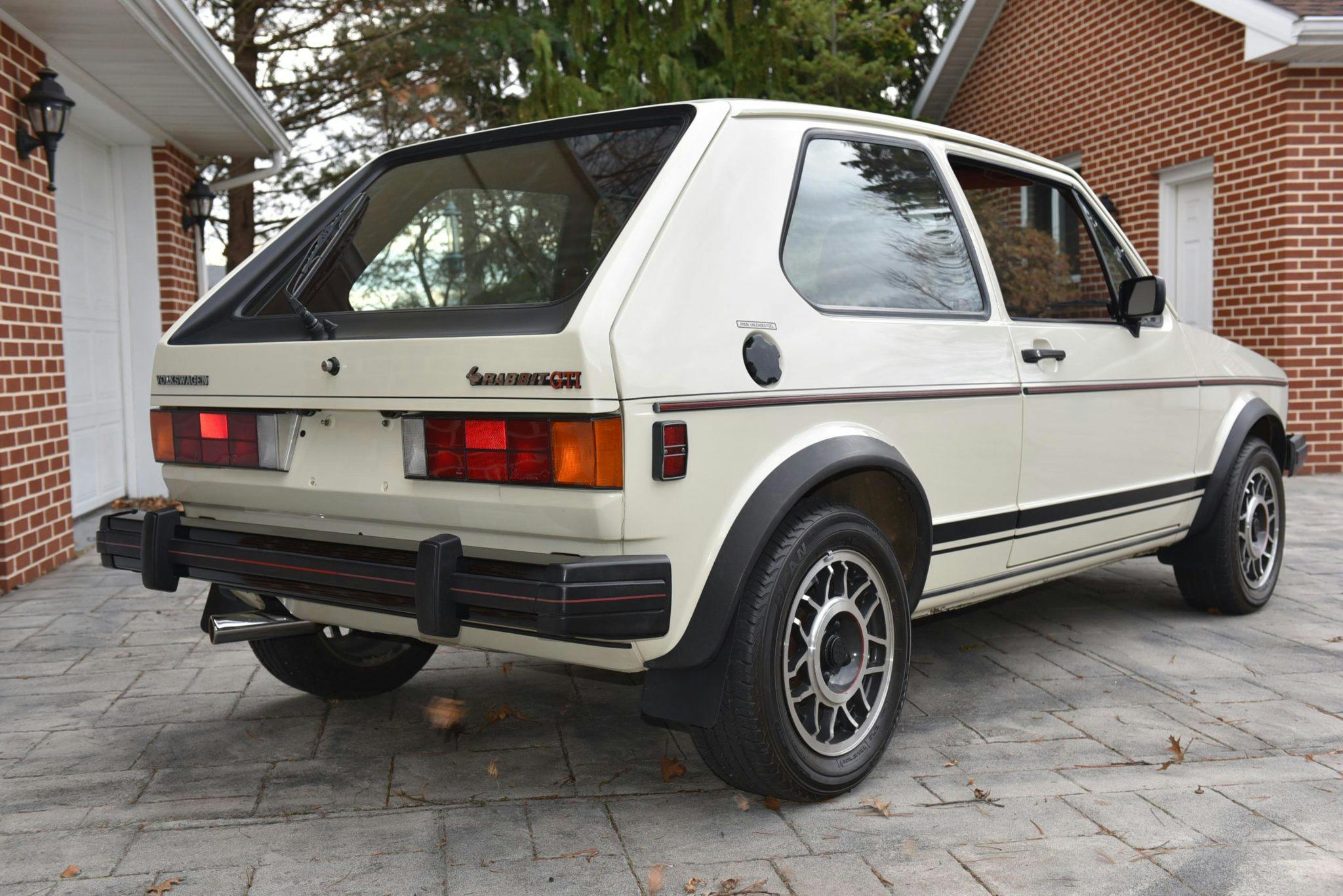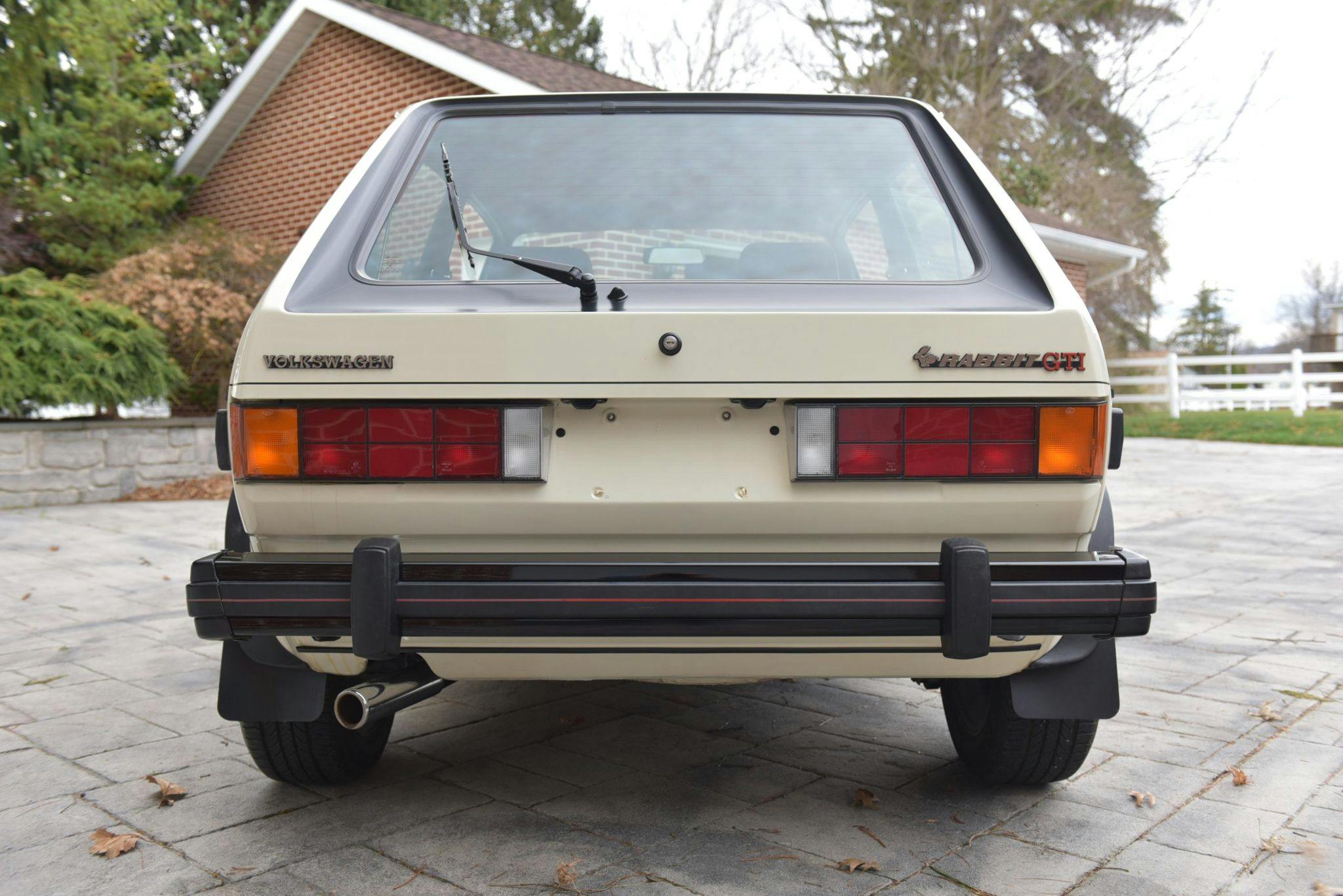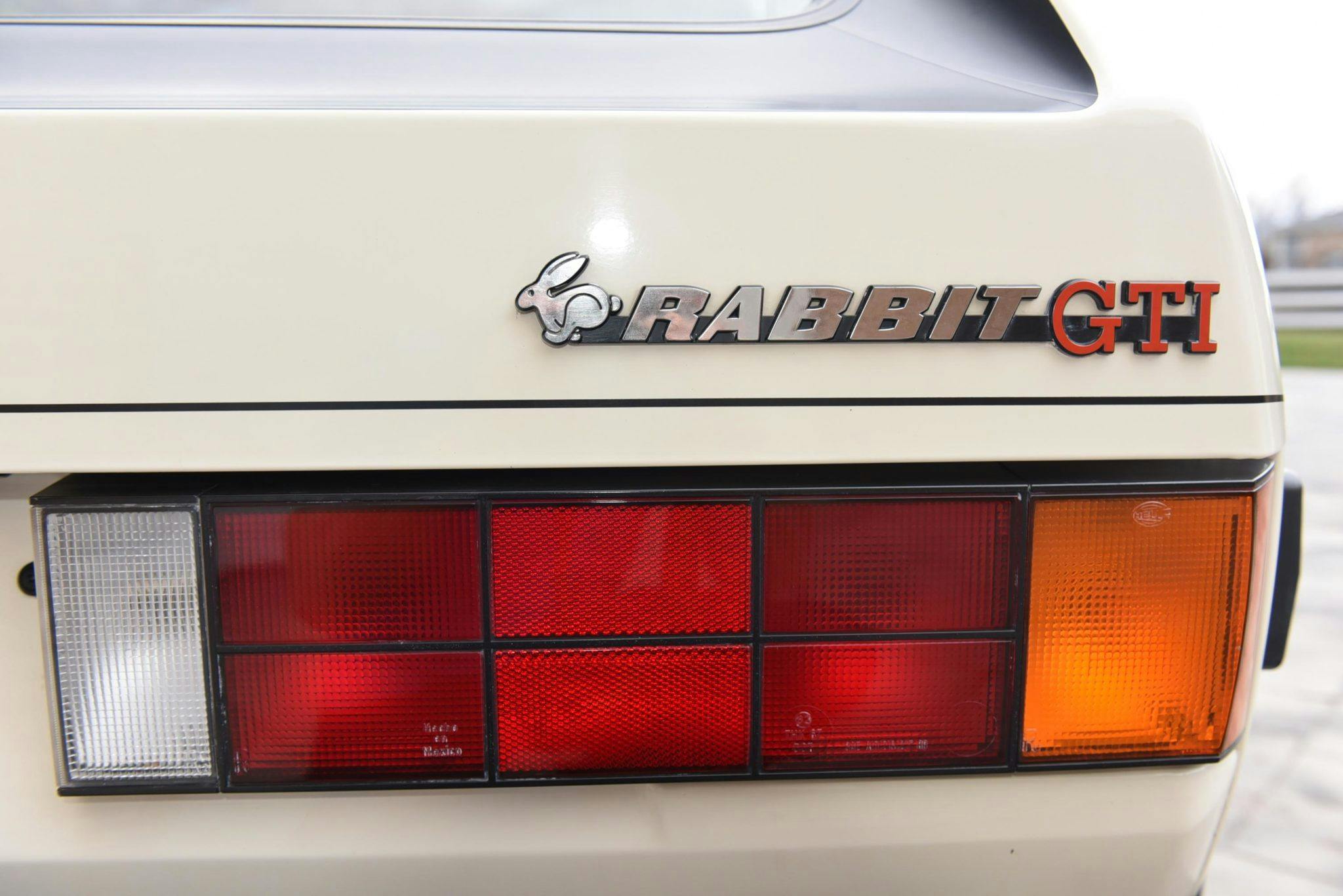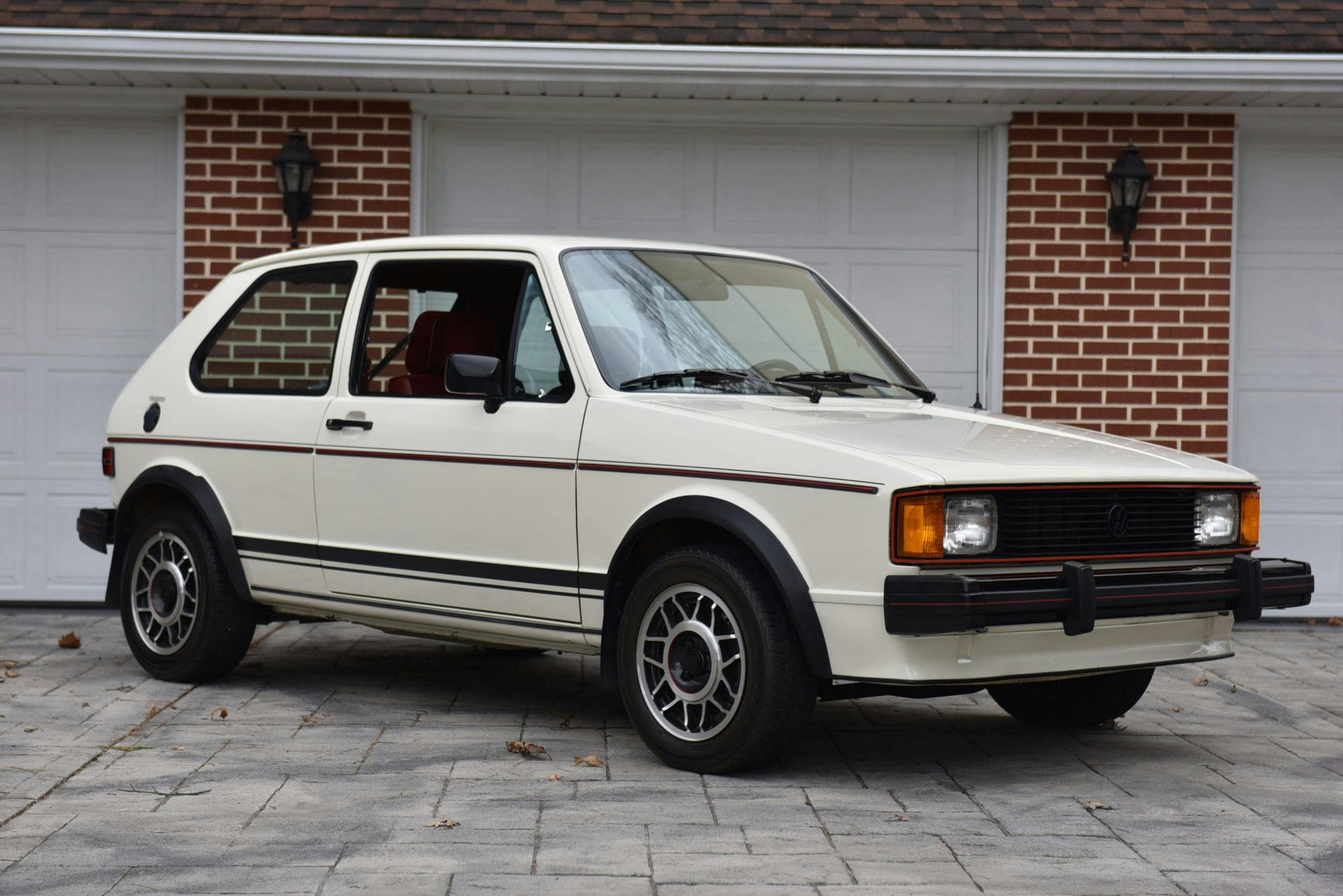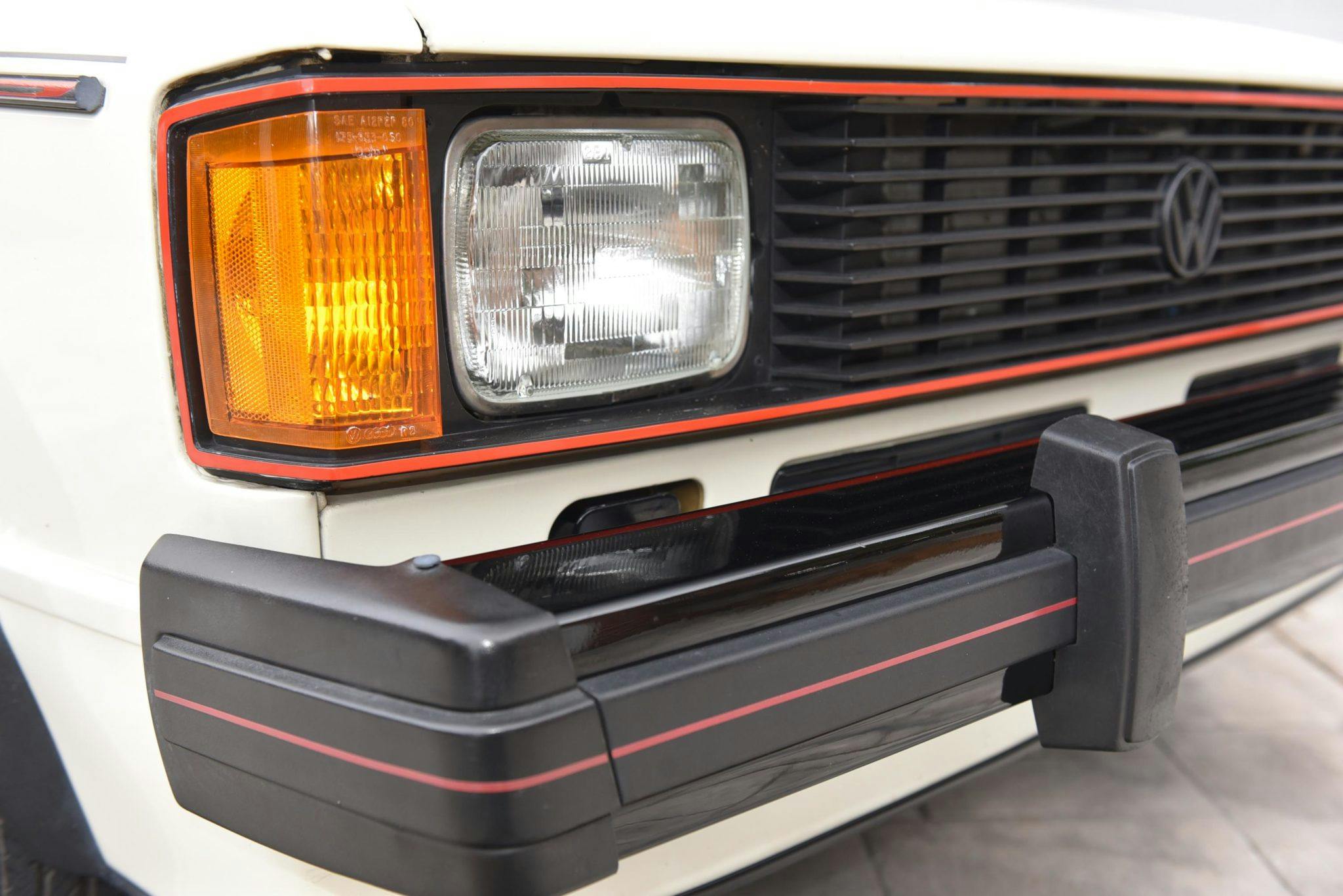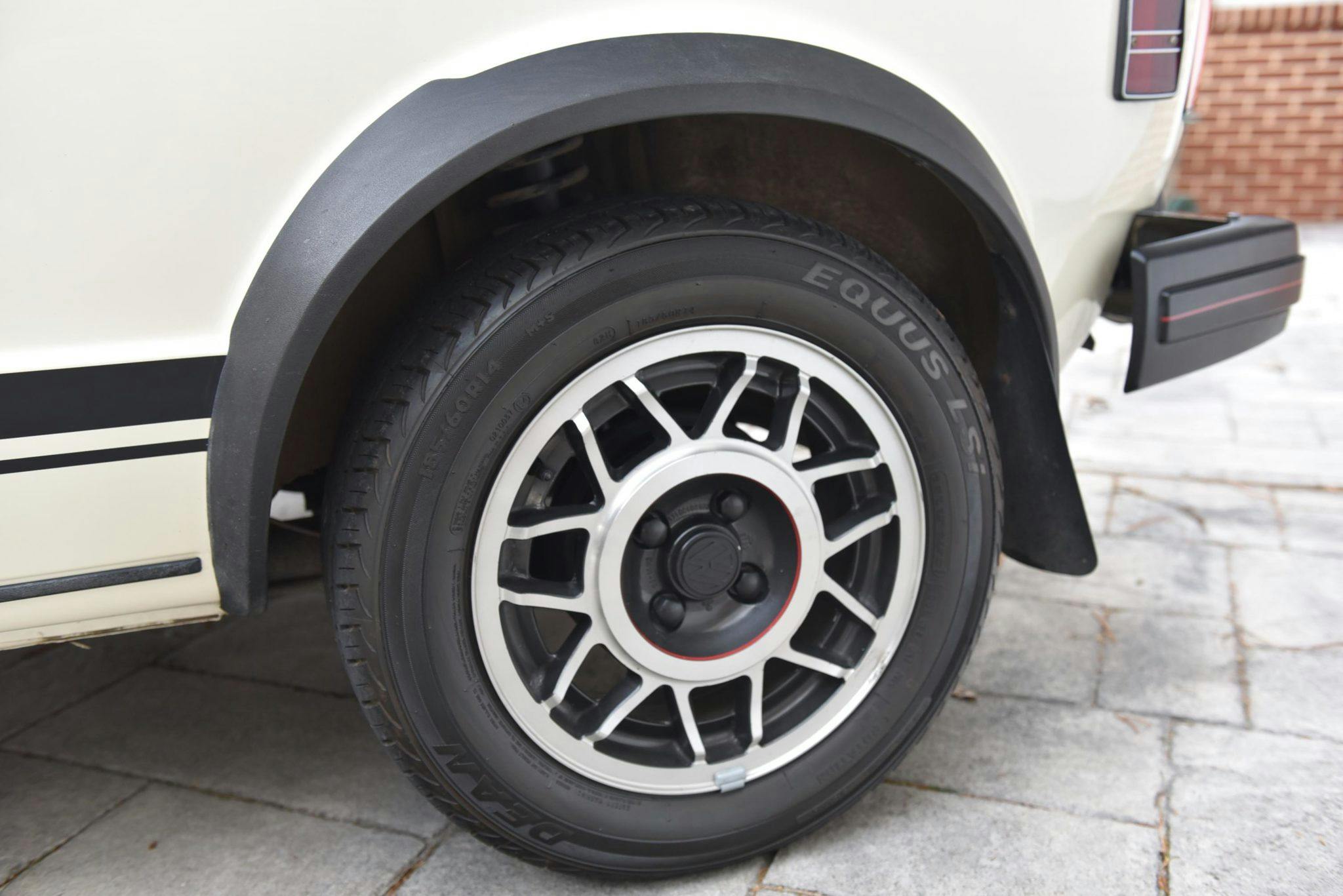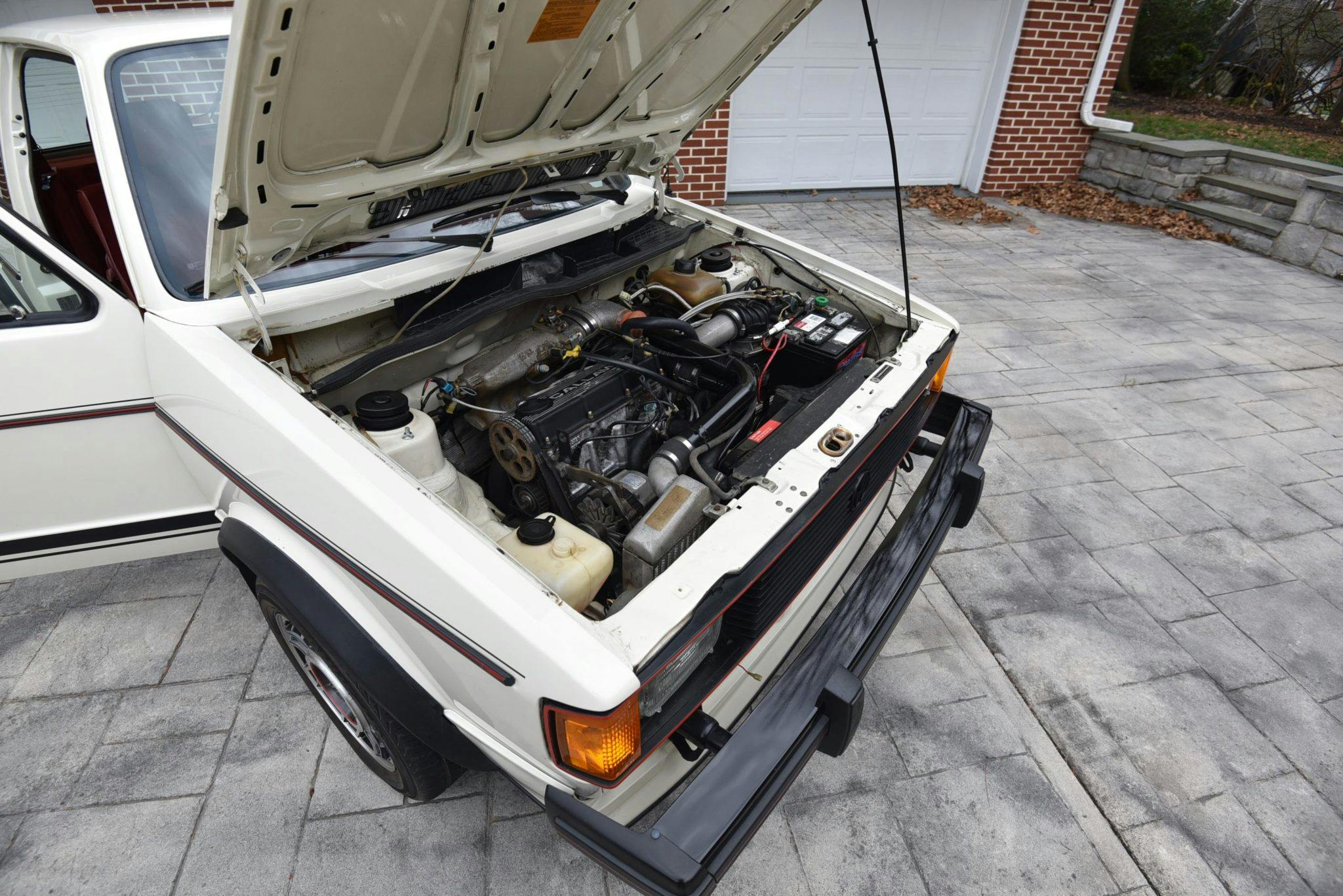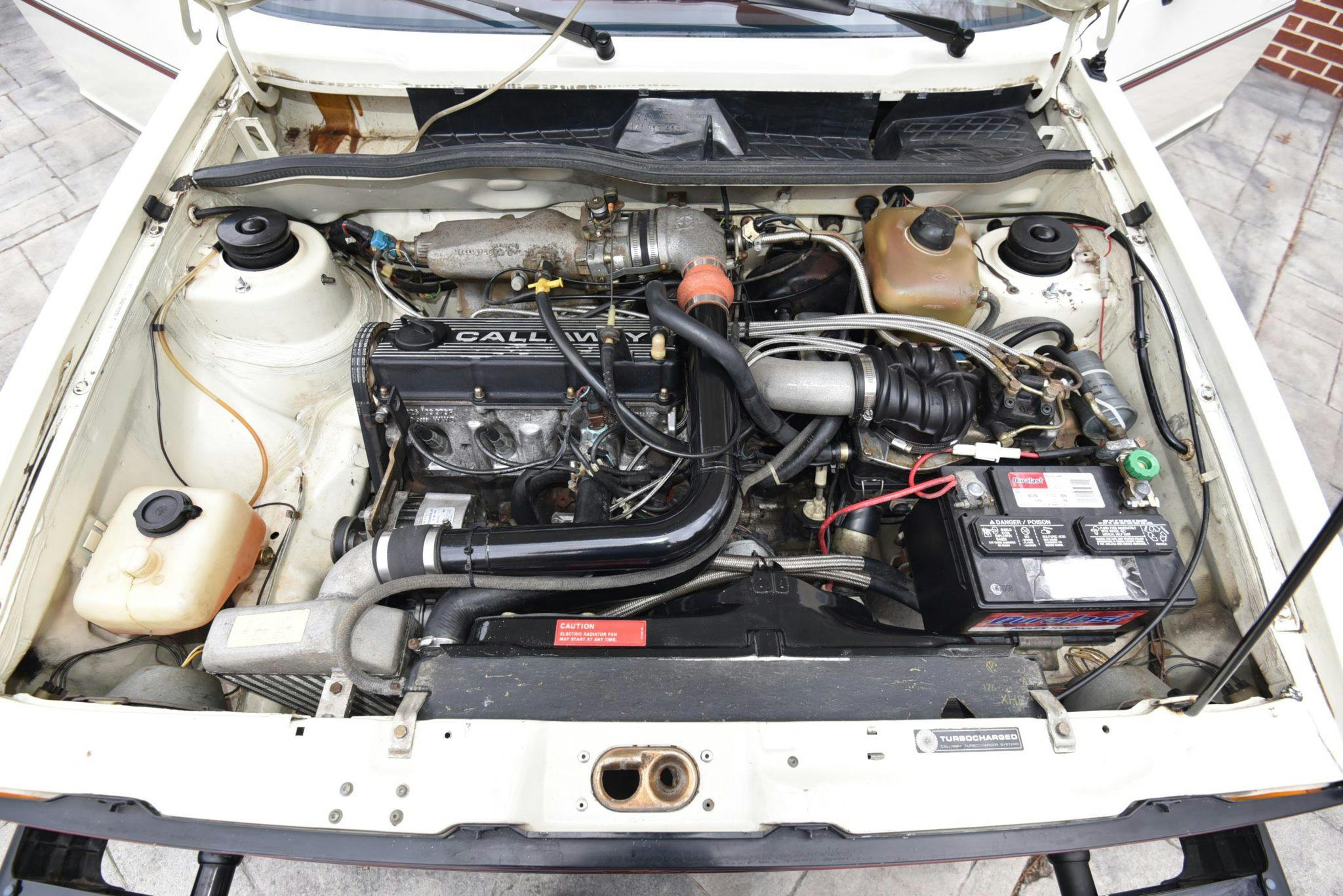Callaway might be known for Corvettes, but its spicy Mk. 1 VW GTI remains one hot hatch
Almost 40 years after its release the Volkswagen Rabbit GTI is having a resurgence—or should we call it “The Rabbit-issance”? That’s terrible. I’m sorry.
We first took notice back in September when an original-owner example with 100,000 miles sold for $33,000, breaking the record for a Mk. I GTI sold at auction. Since then, several Mk. I GTIs have sold for north of $20K. This phenomenon isn’t limited to North America, either: In February, one sold for $30K at Retromobile in Paris. Now, this 19K-mile 1983 Rabbit GTI Callaway Turbo sold for $38,000. What gives?
To the uninformed, spending over $30K for a 40-year-old, factory-modified econobox may seem crazy. Those hypothetical people, however, just don’t get it. Let this 1984 commercial get you pumped for the history lesson that follows …
Oh, I forgot. You don’t speak German. The chorus, sung by what sounds like a Berlin-based Beach Boys cover band, is “How it zips, how it zooms! GTI!” … Which really is the best way to sum up the car.
In the mid-1970s, Volkswagen had the crazy idea of giving its 1800-pound Golf a 108-hp, 1.8-liter inline-four, a wild idea that resulted in the Golf GTI. It was an instant hit. American automotive journalists praised the GTI for communicating pure driving sensation while maintaining everyday practicality. Unfortunately, at the time, the GTI wasn’t offered in North America. Starting in 1979, a Rabbit GTI was sold in Canada, but with its underpowered 1.5-liter engine and wide-ratio five-speed, it didn’t live up to the legend of the European GTI. Car enthusiasts were skeptical when Volkswagen announced the GTI was coming to America in 1982. Many were worried it would be watered-down like the Canadian version.
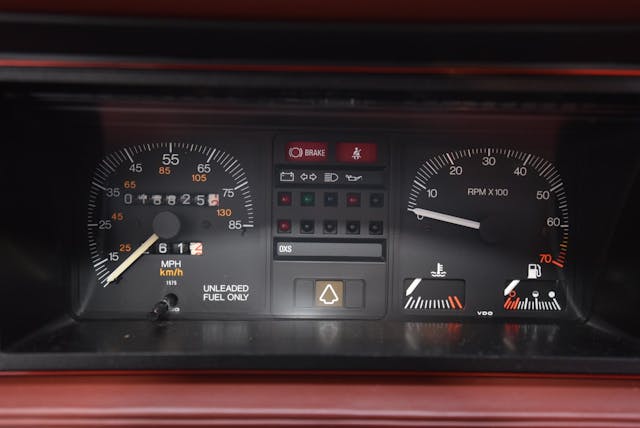
Thankfully, America’s GTI wasn’t a letdown. Based on the already popular Rabbit, Volkswagen heavily modified the powertrain and suspension. First, its engineers bored the inline-four engine to 1780 cc, installed 20-percent lighter pistons, redesigned the head with larger valves, and increased the compression ratio. To help the beast exhale, an all-new free-flow exhaust was developed which reduced back pressure by 35 percent. The engine modifications resulted in 90 hp and 105 lb-ft of torque, a 22-percent and 12-percent increase over the base Rabbit’s horsepower and torque figures, respectively. Remember, this car only weighed one ton, and a close-ratio five-speed transmission helped the GTI feel faster than it was. The added power improved the Rabbit’s 0–60 time by two whole seconds, resulting in a 10.6-second sprint. (Fun fact: VW knew 10.6 seconds didn’t sound fast, so it advertised the 0–50 spec to get a smaller number.)
That’s not very fast by today’s standards and, honestly, it wasn’t that fast in 1983. Straight-line speed wasn’t the Rabbit GTI’s area of expertise, however. It was built for cornering. In a 1983 Road and Track test, the Rabbit GTI ran R&T‘s 700-foot slalom at 61.3 mph—while a 911 SC from the same period only managed 59.7 mph. To accomplish this, Volkswagen improved the already excellent handling of the Rabbit by adding anti-roll bars, stiffer springs, and ventilated front disc brakes. With small tires and unassisted rack-and-pinion steering, the Rabbit GTI constantly gave the driver feedback—something that is desperately lacking from most modern cars. It was regarded as one of the most fun-to-drive cars in its day and still holds that honor almost 40 years later.
In true German fashion, Volkswagen made the GTI a sleeper. From a distance, the GTI looks like a base Rabbit. Only the flat black trim pieces, red accents, and 14-inch wheels under flared arches let other drivers know that you bought the fast one. The perfect balance between its family-car practicality and exhilarating driving experience cemented the Mk. I GTI in history as the original hot hatch. The Mk. I was arguably the best GTI ever sold in America. Later GTI generations kept getting bigger and heavier. The Mk. I is the GTI that every GTI generation since is compared to but never surpasses—like all younger siblings.

Still, if 90 horsepower wasn’t enough for you, there were several contemporary tuning companies at the time that offered to boost the GTI’s performance. The original owner of this car must have felt that way when he sent the car to Callaway (yes, that Callaway) for a Stage II Turbo kit that more than doubled the engine’s output. The Callaway tune added a turbocharger, intercooler, oil cooler, and a modified exhaust system resulting in 200 horsepower. To handle the extra power, Callaway installed an aftermarket front sway bar and lower stress bar. A taller fifth gear was installed giving the added horses had room to run—and making the 85-mph speedometer seem even more ridiculous. Much like the Germans, the original owner was very conscious of keeping his GTI a sleeper. Other than a small boost gauge on the dash, there is nothing outside the engine bay that reveals this is a 200-hp Rabbit.

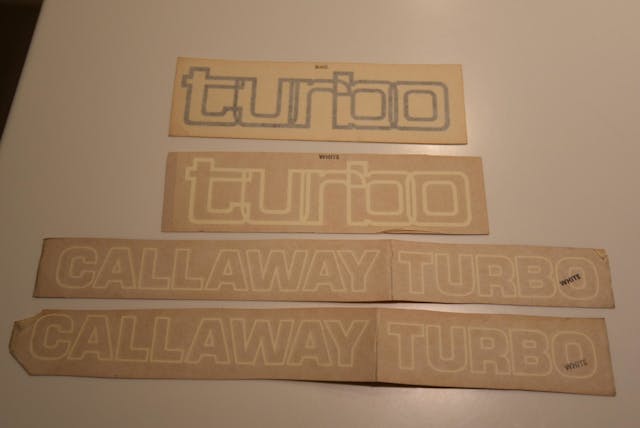
Documentation and owner history are extremely important on low-mileage collector cars. This GTI is only a two-owner car with the most recent owner buying it in 2013. Luckily, for the first 30 years, this Rabbit was owned by an engineer who keep the most detailed ownership notes I’ve ever seen. Included in the sale is a 5-inch-thick binder that covers each of the 18,825 miles the car has been driven. The original owner included copies of the checks he used to pay for the car. There are even hotel receipts from the night before the owner picked up the car from Callaway in Old Lyme, Connecticut. Included in the binder are detailed notes hand-written by the original owner comparing tuning companies with reasons why he chose Callaway.
As you can imagine, someone who maintains this level of documentation also takes good care of his car. Apart from minor corrosion and blemishes, the car is in excellent condition. The red interior is in near-mint condition.


At $38,000, this Callaway-tuned Rabbit GTI broke the auction record for a Mk. I GTI. Which isn’t surprising. Honestly, I thought it would go higher. There aren’t many Rabbit GTIs left in this condition, let alone with a Callaway tune. The Mk. I Rabbit GTI was only sold in America from 1983–84, with 30,000 leaving the Westmoreland, Pennsylvania, assembly plant. Many of them were driven until the wheels fell off, while rust claimed the rest.
With younger collectors moving toward “practical” classics from their youth, we will continue to see cars like this sell for record numbers. The buyer pool is large and maturing into its collecting years. Using insurance quotes as a sign of interest, Gen X is leading the charge and accounts for 56 percent of Mk. I GTI quotes. Low mileage, clean examples are hard to come by and collectors will pay good money to relive an important part of automotive history from their youth.
